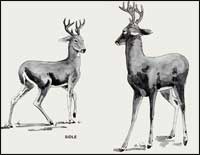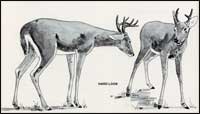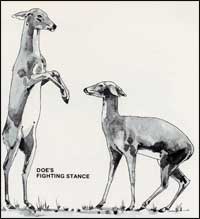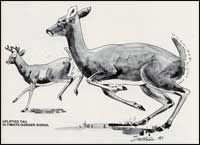Many state wildlife agencies offer excellent information on hunting, wildlife biology and conservation. Problem is, it's often difficult to find. Google doesn't make it easy for government agencies who invest in education, but not as difficult as finding web strategy like SEO and keyword research.
That's not the case for much of the Texas Parks & Wildlife content that keeps popping up in wildlife-related Google searches this writer often initiates on my way to writing a story. Recently, I found a series of posts from the Young Naturalist. Over the span of decades, more than 100 “Young Naturalist” articles were originally published in Texas Parks & Wildlife Magazine, the monthly publication of the Texas Parks and Wildlife Department. Since then, the agency has provided many of those online.
These articles are essentially student handbooks for outdoorsmen, hunters and woodsmen. The articles range from a piece on albinos to a quiz on wildlife skulls.
"I have tried to tailor my writing for the fifth- to seventh-grade level, yet still attract the more adult reader," said Ilo Hiller, retired associate editor of TPWD magazine and author of four wildlife books published by Texas A&M University Press. "If the mail received during the past ten years gives a reliable estimate, the Young Naturalist may have managed to attract as many adults as children."
It's true. It's perfect for hunters who are just as interested in hunt strategy as they are in wildlife biology and woodsmanship.
Here's an excerpt from the Young Naturalist on whitetail body language.
Whitetail Sidle
Biologists studying the aggressive behavior of deer have found that males display five intimidation postures — each more aggressive toward the adversary. The mildest display is called the ear drop. When the dominant buck drops its ears along its neck, the message may be sufficient to send the other deer on its way. If not, the dominant buck then displays a hard look. The head and neck are extended and the ears are flattened along the neck as the buck glares at his adversary.
Hard Look
If the adversary responds with a hard look of his own, the dominant buck progresses to the sidle. With his head and body turned about 30 degrees from the adversary, the buck advances with several sidling steps. His head is held erect, his chin is tucked in, and the hair along his neck and hips is raised to show anger.
Whitetail Antler Threat
Failure to yield to this display brings on the antler threat. The dominant buck drops his head and presents his spiky, polished antler points. If the adversary stands his ground and responds with his own antler threat, the rush follows.
Whitetail Bucks Rush
Both bucks rush together, making violent contact with their antlers, shoving, twisting, and testing each other’s strength. The battle may end after a single rush or continue for fifteen or twenty minutes. Few things will distract the battling bucks once they are engaged in combat. The battle ends when one or the other has had enough and gives way to the victor.
Occasionally the antlers of battling bucks become wedged together during combat. When this happens, both become losers since they cannot survive in this condition. Now and then a hunter will discover their carcasses, with antlers still tightly wedged together.
Whitetail Doe's Fighting Stance
Female deer also establish a peck order and display aggressive behavior. Does, like bucks, use the ear drop, hard look and sidle body language. However, since they don’t have antlers, they use their front feet to determine their dominance. If the preliminary body-language threats are not effective, the dominant doe lunges at her adversary and then strikes out with one or both front fee.
As a last resort, the fighting does stand up on their hind legs and slash out at each other with both front feet. Their sharp hooves are wicked weapons, and the does do not bluff or fight mock battles. Injuries do occur. When one or the other has had enough and is willing to give ground to the victor, the fight ends. Fawns duplicate the aggressive behavior of does, and bucks that have shed their antlers have been observed fighting with their forefeet.
Danger Signals
A combination of body language and sound comes into play when danger threatens. If a deer is mildly disturbed and the danger has not been identified, the animal stamps its front feet. It may use only one forefoot or may alternate between the two. As suspicion increases, the deer may snort along with the stamping action.
Further threat may cause the snorting to become an explosive whistle just before the animal turns to flee. The ultimate warning is the uplifted tail as the deer bounds to safety. When the tail is raised, its highly visible white underside is exposed. A startled deer may skip any or all of the preliminary signals, but it almost always displays the flaglike tail as it runs away.
Featured photo: John Hafner












